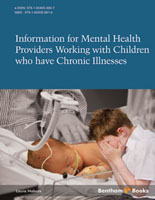Demographic evolution will extensively increase the number of subjects aged 65 years and beyond in the upcoming years. This demographic trend raises an important new challenge for healthcare professionals. Changes in organ functions, homeostatic mechanisms and receptor responsiveness impair drug distribution, metabolism and excretion, and reduce the effectiveness of medicines. Good clinical trial data in this age group are often lacking, under-treatment is common, and increasingly fragility can make drug administration difficult. As a consequence, medication management is much more challenging in the elderly than in younger adult patients. Pathophysiologic alterations occurring in the passing to middle age to old age are known to modify the response to drugs, including phycotropic drugs.
The use of drugs in the general population and especially in the elderly has dramatically increased over the last decades, with older people aged 65 consuming about four times as many drugs as the rest of the population. Psychotropic drugs prescription in particular is becoming a major public health issue as its use is continuously increasing. One (frequently inadverted) risk of such use is the envionmental impact of pharmaceuticals. After their use, drugs are excreted in their native form or as metabolites and enter aquatic systems via different ways. Although there is some information about the environmental impact of certain drugs, knowledge about what happens with the vast majority of them is simply lacking.
Other deleterious consequences are drug interactions and inappropriate drug prescription. In this sense, the elderly population suffers more drug-drug interactions, drug-disease interactions and adverse drug reactions than other age groups derived from the high number of drugs administered. Polypharmacy and potentially inappropriate medication is a common finding in the elderly and it is considered a public health issue related to morbidity, mortality and health care resource use. Avoiding the use of inappropriate drugs and high risk drugs is an important, simple and effective strategy to reduce the problems associated with medication in the elderly.
Specific considerations about pharmacovigilance in elderly patients are widely described. In this sense, medications are brought to market with limited experience regarding their adverse effects, given the small number of people who have taken them during pre-marketing clinical tests. This is particularly true with elderly patients. As a result of this conditioning factor, in particular during the years leading up to the appearance of a new medication, health professionals (basically the physician) should pay special attention to: both identifying adverse effects of medications and reporting them in order to maintain a favorable risk-benefit balance always.
In the second part of the book, a comprehensive and actualized review of the main specific classes of psychopharmacological agents used in geriatric patients is provided, including antipsychotics, anxiolytics & hypnotics, mood stabilizers and antidepressants.
Even though anxiolytics & hypnotics are relatively a safe group that can provide rapid symptomatic amelioration, most of them are associated to the development of addiction and pose specific problems in old age. Therefore, the peculiars of these compounds and the characteristics of the elderly make especially accurate the classical recommendation to prescribe these drugs for short periods of time only.
The following chapter reviews the different drugs labeled as mood stabilizers and where available introduces some considerations on their use in old age. Given the lack of controlled trials enrolling elderly bipolar patients, most information derives from application to geriatric patients’ characteristics of those data obtained in studies with other age groups, and also from decades of clinical experience, especially with lithium.
Antidepressants are drugs used for the treatment of depression and many other psychiatric conditions. Albeit belonging to different chemical families and with a number of mechanisms of action, all of them enhance neurotransmitters at the synaptic cleft. They have a range of adverse effects and effectiveness compared with placebo, according to meta-analysis, is poor. However, they have shown to be efficacious in the elderly. Second-generation antidepressants are safer and better tolerated, but not devoid of side effects, something not to be forgotten when treating a population in which frailty and polypharmacy are common.
Antipsychotics are those psychiatric drugs primarily used for the treatment of psychosis, mainly schizophrenia. Since their introduction, they have been used in a host of indications, but apart from mood disorders and somatoform disorders or insomnia in some European countries, most non-psychosis uses are off-label. Antipsychotics are associated to serious adverse effects, which call for a careful use, especially in the elderly. Dementia is a common off-label use of antipsychotics. However, there are neither controlled studies, nor theoretical grounds supporting their use, especially in the treatment of behavioral disorder, where antipsychotics behave mainly as the "major traqnuillizers” they once were meant to be. As a result, treating dementia with antipsychotics could be a case in point of an irrational use of drugs. Untoward effects linked to antipsychotics when used in dementia are extensively reviewed. Some guidelines to make its use less irrational is also provided.
One disease were antipsychotic use can be problematic is Parkinson’s Disease (PD), can because they can worsen parkinsonism by diminishing dopaminergic transmission in the nigrostriatal pathways. Prior to the introduction of clozapine there was no effective treatment for PD psychosis, and by the time being, is the only antipsychotic that has level I evidence to support its use in PD patients. Several open label studies on quetiapine for the treatment of psychosis in PD have been reported. Some of them showed quetiapine to be effective without worsening motor function while in others it was reported as ineffective although well tolerated.
The simultaneous use of more than one antipsychotic in the management of psychiatric diseases has become a common practice worldwide. Although some theoretical bases have been suggested supporting this practice known as antipsychotic polypharmacy (APP), there is more personal experience than evidence-based behind it. APP is more frequent among young men. Nevertheless, some authors have estimated an APP prevalence in patients aged 65 or more up to 25% or even higher in the outpatient setting. Antipsychotics in the elderly are mainly used in the management of dementia-related behavioural alterations and schizophrenia but, as guidelines recommend, they should be used for short-term treatments. This limitation of duration of treatment has been associated with a wide range of potential risks like cerebrovascular events, hip fracture, pneumonia, QT prolongation, metabolic disorders or even death. These risks are boosted when geriatric population and high dosage derived from polypharmacy are considered. In this concern, some special considerations should be taken into account: optimal antipsychotic election according to patient´s morbidities and other medications in order to avoid interactions, maximal daily dosage, optimal follow-up intervals and recommendations, among others.
Another chapter will discuss the currently used drugs in of proposed for the treatment of substance use disorders, which are under-recognized in the elderly. The lack of studies focused on elderly populations call for a cautious, careful use of pharmacological agents, which must always be accompanied by psychosocial approaches.
Dementia is a devastating illness for which currently there is no curative treatment. In the last twenty years, acetylcholinesterase inhibitors have been approved in the mild to moderate stages of the illness to delay the progression of Alzheimer’s disease, the most prevalent form of dementia, while memantine has been approved in later stages. Clinical experience shows that drug treatment of cognitive symptoms is of little benefit, but there is evidence that both acetylcholinesterase inhibitors and memantine could be helpful to alleviate the behavioral and psychological symptoms of dementia, especially in variants where other alternatives, such as antipsychotics, can be detrimental.
Unax Lertxundi
Pharmacy Service
Araba´s Mental Health Network
C/Alava 43 01006 Vitoria-Gasteiz
Araba/Álava
Spain
Juan Medrano
Ezkerraldea - Enkarterri Mental Health Community Services
Bizkaia´s Mental Health Network
Portugalete
Bizkaia/Vizcaya
Spain
&
Rafael Hernández
Internal Medicine
Araba´s Mental Health Network
C/Alava 43 01006 Vitoria-Gasteiz
Araba/Álava
Spain








